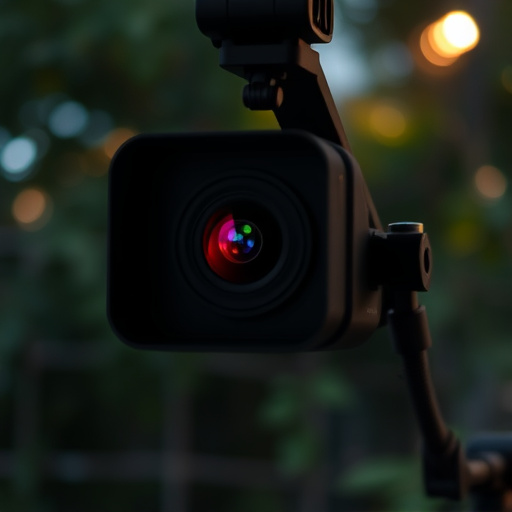Privacy and security in elderly care settings demand advanced hidden camera technology to combat nighttime lens glint. Best Hidden Cameras for Elderly Care utilize image processing algorithms and techniques like infrared filtering or dynamic light compensation to mitigate glint without compromising quality. High-quality lenses with large apertures enhance low-light performance, ensuring clear night-time surveillance. Balancing technology's benefits with ethics is crucial; strict guidelines needed to protect privacy, obtain consent, maintain data security, and preserve trust in care environments.
In the realm of elderly care, ensuring safety and privacy is paramount. One lurking concern is the potential use of hidden cameras, making it crucial to implement effective detection methods. This article delves into the advanced techniques for identifying camera lens glints during nighttime hours, using specialized lenses for optimal visibility. We explore ethical considerations surrounding privacy in care settings, offering insights on the best hidden cameras for elderly care while maintaining a balanced approach.
- Understanding Night Glint: The Elderly Care Concern
- Detecting Hidden Cameras: Advanced Techniques
- Best Lenses for Nighttime Visibility
- Ethical Considerations: Privacy in Care Settings
Understanding Night Glint: The Elderly Care Concern
Nighttime glint from camera lenses can pose a significant challenge in elderly care settings, where privacy and security are paramount. These reflections, caused by light sources like streetlamps or indoor lighting, can reveal sensitive information captured by hidden cameras intended for monitoring purposes. The concern lies in preserving the dignity of residents while ensuring the safety and well-being of those under care. Therefore, when selecting best hidden cameras for elderly care, it’s crucial to consider lens glint detection technologies that can mitigate these issues.
Advanced image processing algorithms play a vital role in addressing night glint. Some systems employ sophisticated techniques like infrared filtering or dynamic light compensation to minimize lens reflections without compromising picture quality. This ensures that caregivers gain valuable insights into the well-being of elderly individuals without inadvertently exposing their private moments, thereby fostering a safer and more comfortable environment for all.
Detecting Hidden Cameras: Advanced Techniques
Detecting hidden cameras, especially in sensitive environments like elderly care facilities, has become a critical aspect of ensuring privacy and security. Advanced techniques go beyond basic visual inspections to uncover sophisticated surveillance devices that might be imperceptible to the naked eye. One innovative method involves utilizing specialized camera lenses capable of detecting subtle glints—a technique particularly effective for identifying small, high-tech hidden cameras.
These lenses are designed to analyze light reflections and patterns, which can reveal the presence of covert recording equipment. By employing advanced algorithms to process these visual inputs, security personnel can pinpoint hidden cameras, even when they’re disguised or placed in hard-to-reach areas. This approach, therefore, offers a robust solution for maintaining privacy and safety, particularly with the growing prevalence of high-tech surveillance technology, such as those that target the elderly care sector, by employing the best hidden cameras for elderly care detection.
Best Lenses for Nighttime Visibility
When it comes to enhancing nighttime visibility, the choice of lens plays a pivotal role in the effectiveness of your surveillance system, especially when employing best hidden cameras for elderly care. Opting for high-quality lenses designed specifically for low-light conditions is essential for capturing clear and detailed images in the dark.
Prime lenses with larger apertures (e.g., f/1.8 or wider) are ideal for night photography as they allow more light to enter, resulting in brighter and sharper images. These lenses are particularly beneficial for hidden camera setups, ensuring optimal visibility without sacrificing image quality. Additionally, looking for lenses with advanced optical coatings can reduce glare and reflections, further enhancing the overall performance during nighttime surveillance.
Ethical Considerations: Privacy in Care Settings
In the realm of elderly care, ensuring privacy and ethical conduct is paramount. With advancements in technology, the use of hidden cameras to monitor care facilities has gained attention, especially when discussing the best hidden cameras for elderly care. However, this practice raises significant privacy concerns. Caregivers and residents must be made aware of surveillance systems to maintain transparency and respect individual autonomy. Unethical implementation of camera lenses, particularly glint detection methods at night, can infringe on personal boundaries and foster a sense of distrust.
Therefore, as technology evolves to aid in care settings, it is crucial to balance the benefits with stringent ethical guidelines. This includes open communication about surveillance, obtaining informed consent, and ensuring data security to safeguard residents’ privacy. The use of hidden cameras should never compromise the dignity and trust between caregivers and the elderly, especially when implemented without proper considerations for privacy in care settings.
In conclusion, the detection of camera lens glints at night presents a complex yet essential aspect of ensuring privacy and security in elderly care settings. By understanding the nature of night glint, employing advanced techniques for hidden camera detection, choosing the right lenses for optimal visibility, and adhering to ethical considerations, caregivers can create a safer environment for their charges. When selecting surveillance equipment, opting for the best hidden cameras designed for elderly care—those that offer discreet installation, superior nighttime performance, and respect for privacy—is paramount in maintaining trust while safeguarding vulnerable individuals.
